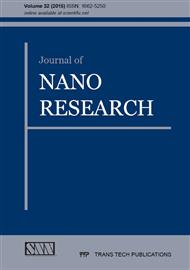p.1
p.17
p.25
p.32
p.43
p.51
p.60
p.66
p.71
Comparative Studies in Dispersing Nanoparticles in a Styrene Butadiene Rubber Matrix via Different Blending Methods
Abstract:
InIncorporation and dispersion of particulate fillers are the two steps that are necessary to achieve optimum properties in a rubber compound, i.e. mechanical, thermal properties. The incorporation and dispersion of particulate fillers depend on their particle size, smaller particle size is difficult to incorporate but easier to disperse in a rubber matrix while large dimension particle size filler are easier to incorporate but difficult to disperse. Hence, in the current work we have studied different methods of incorporating nano particles in to the matrix of styrene butadiene rubber and further rubber nanocomposites obtained were characterized for curative properties using, remote, thereafter determined for structural elucidation by using Fourier transform infrared spectroscopy, thermal properties through thermal gravimetric analysis, Physio-mechanical as well as morphology determination via transmission electron microscopy. In current work we have compared melt blending and solution blending methods for preparation of styrene butadiene rubber Nano Aluminium Tri hydroxide composites.
Info:
Periodical:
Pages:
43-50
Citation:
Online since:
May 2015
Authors:
Price:
Сopyright:
© 2015 Trans Tech Publications Ltd. All Rights Reserved
Share:
Citation:


